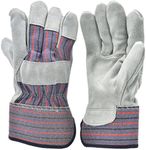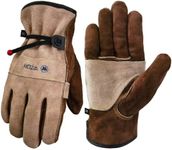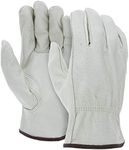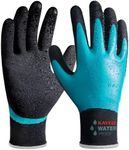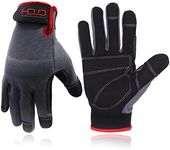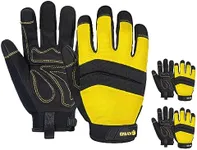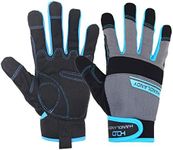Buying Guide for the Best Landscaping Work Gloves
Choosing the right landscaping work gloves is essential for protecting your hands while working outdoors. The right pair of gloves can make a significant difference in comfort, safety, and efficiency. When selecting landscaping gloves, consider the type of tasks you'll be performing, the materials used in the gloves, and the level of protection and comfort they offer. Here are some key specifications to consider when choosing landscaping work gloves.MaterialThe material of the gloves is crucial as it determines durability, flexibility, and protection. Common materials include leather, synthetic leather, cotton, and rubber. Leather gloves are durable and provide excellent protection against sharp objects, making them ideal for heavy-duty tasks. Synthetic leather offers similar benefits but is often more flexible and breathable. Cotton gloves are lightweight and comfortable but may not provide as much protection. Rubber gloves are great for tasks involving water or chemicals. Choose the material based on the specific tasks you'll be performing and the level of protection you need.
Fit and SizeA proper fit is essential for comfort and functionality. Gloves that are too tight can restrict movement and cause discomfort, while gloves that are too loose can slip off or reduce dexterity. Most gloves come in various sizes, so it's important to measure your hand and refer to the manufacturer's sizing chart. Look for gloves with adjustable closures, such as Velcro straps, to ensure a secure fit. Consider the type of work you'll be doing and choose a size that allows for both protection and ease of movement.
GripGrip is important for handling tools and materials safely and efficiently. Gloves with textured palms or fingers provide better grip, reducing the risk of slipping and improving control. Some gloves have rubberized or silicone coatings on the palms and fingers for enhanced grip. If you'll be working with wet or slippery materials, look for gloves specifically designed to provide a strong grip in those conditions. Choose gloves with the appropriate level of grip based on the tasks you'll be performing.
ProtectionThe level of protection offered by the gloves is a key consideration. Look for gloves with reinforced palms and fingers to protect against cuts, abrasions, and punctures. Some gloves also offer additional features like padded knuckles or wrist protection. If you'll be working with thorny plants or sharp tools, choose gloves with higher levels of protection. For tasks involving chemicals or extreme temperatures, look for gloves that provide specific protection against those hazards. Assess the risks associated with your tasks and select gloves that offer the necessary protection.
BreathabilityBreathability is important for comfort, especially during long periods of use or in hot weather. Gloves with breathable materials or ventilation features help keep your hands cool and reduce sweating. Look for gloves with mesh panels, perforations, or moisture-wicking linings. If you'll be working in hot conditions or for extended periods, prioritize gloves with good breathability to maintain comfort and prevent skin irritation. Choose gloves that balance protection and breathability based on your working environment.
Flexibility and DexterityFlexibility and dexterity are important for tasks that require precise movements and handling of small objects. Gloves that are too stiff can hinder your ability to perform detailed work. Look for gloves made from flexible materials or with features like pre-curved fingers that enhance dexterity. If you'll be performing tasks that require fine motor skills, such as planting or pruning, choose gloves that offer a good balance of protection and flexibility. Consider the specific tasks you'll be doing and select gloves that allow for the necessary range of motion.

